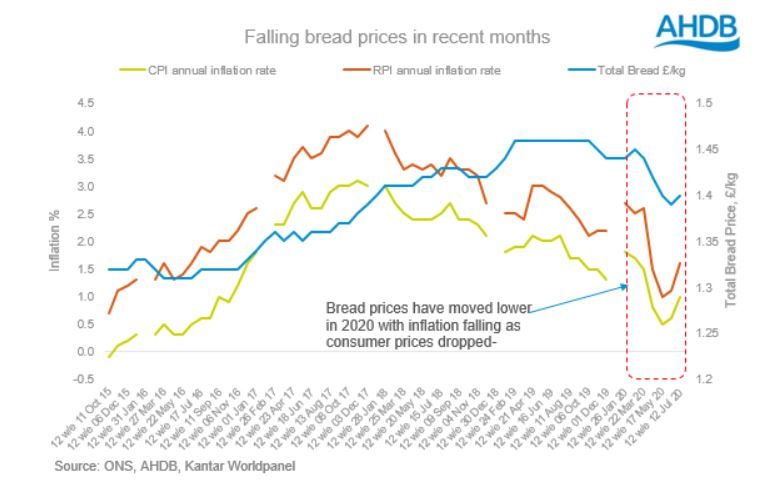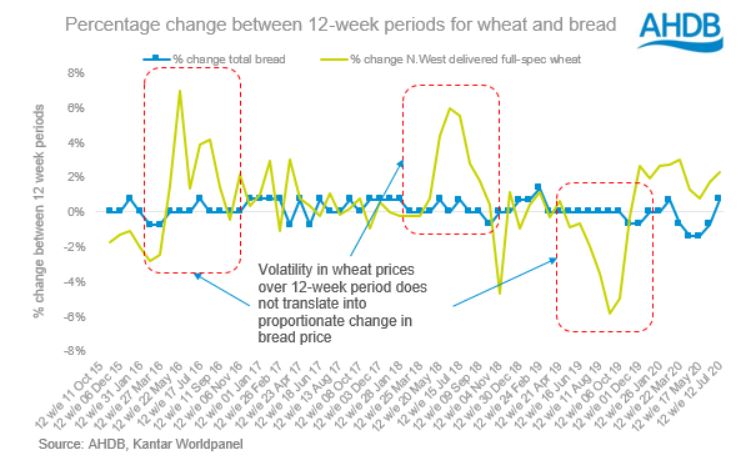In Ireland we don’t produce wheat for flour on any significant scale – apart from a few small artisan and organic producers. We are largely dependent on the UK for flour supplies and some European countries to get the right flour blends.
As we are dependent on the UK’s wheat, it is important to keep an eye to the harvest where the wheat harvest is reported to be one of the worst in decades by some. Poor weather at sowing and heavy rain at harvest has not helped yield or quality.
This will come as no surprise to Irish tillage farmers who struggled to get wheat crops planted and are now struggling to get them harvested and in good quality as sprouting is prevalent in crops.
How does wheat price affect bread price?
Approximately 85% of the wheat used in flour milling in the UK is grown in the UK. However, more imports will be needed to make up the shortfall this year, and after December 31 these imports may be subject to tariffs.
Milling wheat prices have been climbing and this price increase will most likely be seen in flour prices also. However, according to the Agriculture and Horticulture Development Board (AHDB) this may not necessarily be seen in bread prices.
David Eudall – head of market specialists (arable) at the AHDB – stated: “Wheat prices have a much more direct and pronounced impact on flour, but the subsequent bakery production processes, ingredients, packaging, marketing and transportation mean that wheat isn’t directly related to the price of bread.
We estimate that the value of wheat in an 800g loaf of bread stands at only 11%.
“With a small harvest and increased imports, our domestic milling wheat prices have been moved higher.
“However, the price of a loaf on the shelf will be far more influenced by the need for supermarkets to keep consistent prices for consumers amid the record-breaking recession we face [and possible deflation].”
David also commented that bread prices have been falling since the beginning of 2020 and that this is part of the reason that inflation has been reducing. This graph (below) helps to describe this.
He also showed how volatility in wheat price does not translate into changes in the price of bread. This graph (below) helps to describe this.


